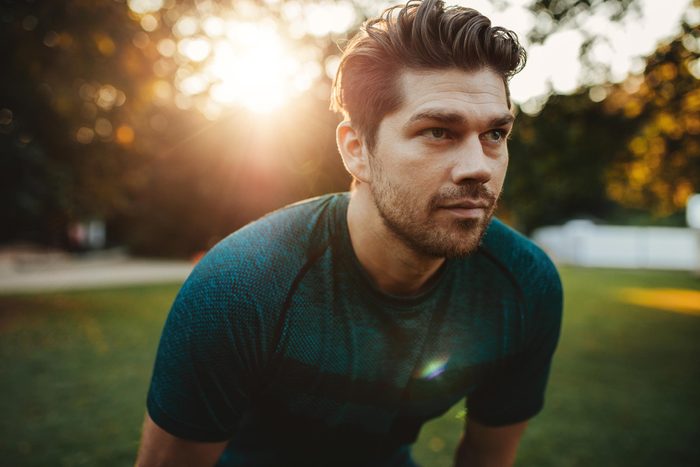
What is heat stroke?
Heat stroke is a term you may also hear referred to as “sunstroke,” and it is clinically defined as when your core temperature soars above 104 degrees Fahrenheit, along with central nervous system dysfunction, explains James Winger, MD, associate professor of family medicine at Loyola University Medical Center in Chicago.
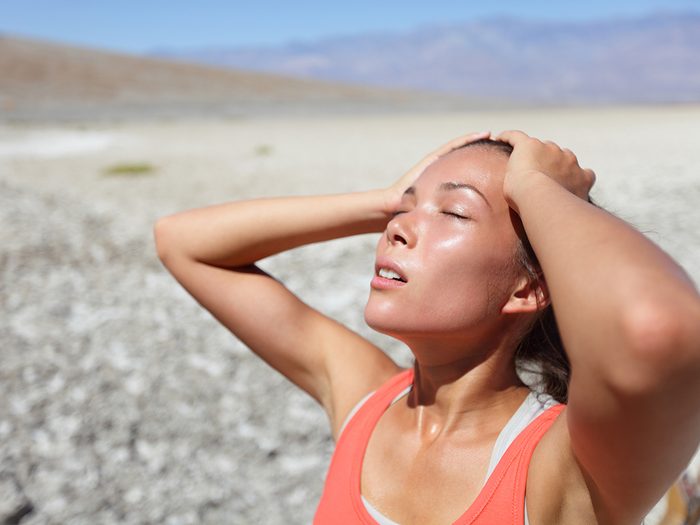
There are two “types” of heat stroke
Heat stroke can happen in two main ways. One is from exertion, when “exercise raises someone’s core body temperature and the systems that usually help the body cool back down don’t work,” says Dr. Winger. For instance, high humidity may impair the body’s ability to cool itself off through perspiration—sweat. A second cause is due to environmental factors like being in a heat wave with no access to air conditioning, for instance.
Discover 20 tricks to keep your house cool without air conditioning.
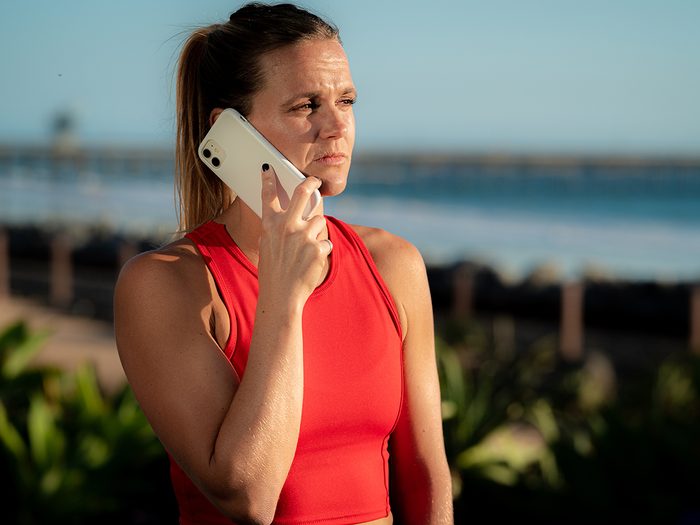
Warning signs of heat stroke:
Confusion
This is by far one of the biggest signs of heat stroke. It’s actually similar to hypothermia (when the body temperature drops too low): Sufferers may begin to make poor decisions or not respond appropriately when asked a question.
Because your mental capacities are compromised, it’s rare that you’d recognize your own brain blips. But people around you can pick up on it. “It’s best to consider if the person is not behaving appropriately to the situation they’re in—this makes it more likely you’ll flag someone in the earliest stages of illness,” says Dr. Winger.
Learn the difference between heat exhaustion and heat stroke.

Dizziness
Disorientation is physical, too. Dizziness or staggering are also signs of exertional heat stroke, according to the University of Connecticut’s Korey Stringer Institute. Dehydration can mess with your equilibrium, so take time to stop and catch your breath, drink water, and reevaluate your activity game plan, if necessary.
Here’s how much water you should drink to stay hydrated.
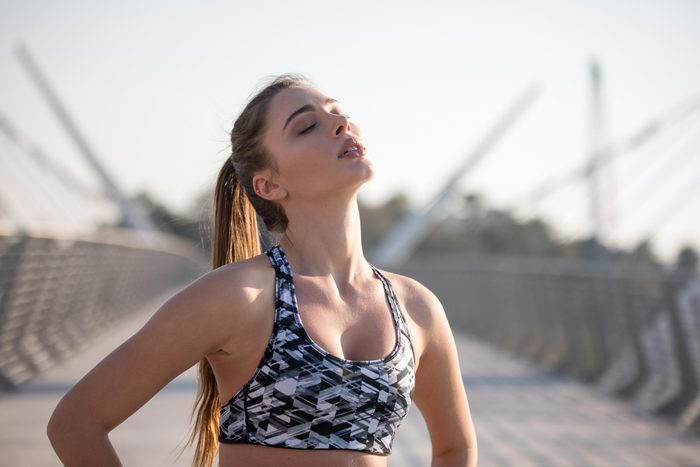
Nausea
If you’re exercising and dealing with nausea, it could mean that the peanut butter toast you ate before heading out is just not sitting right with you. But if it’s a hot day (and you’re not acclimated to working out in the heat) and nausea hits, be wary of heat stroke. Be especially concerned if you vomit. Dr. Winger says that at organized races, doctors in medical tents will have athletes lie down for a few minutes and, if rest doesn’t help them feel better, the doctors will suspect heat illness.
Beef up your summer sun protection with these expert-approved sunscreen tips.
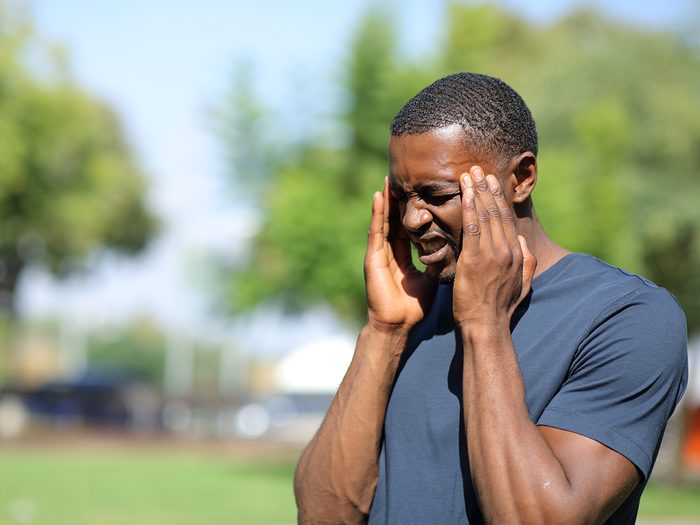
Headache
You’ll likely get a headache with heat stroke, and it’s an early warning sign since you’ll get it with heat exhaustion, according to Beaumont Health. But while you may be able to treat heat exhaustion by going indoors and turning up the air-conditioning, taking a cool shower, and rehydrating, with heat stroke you have an emergency that requires a swift call to 911.
Discover more practical tips to cope with summer heat.
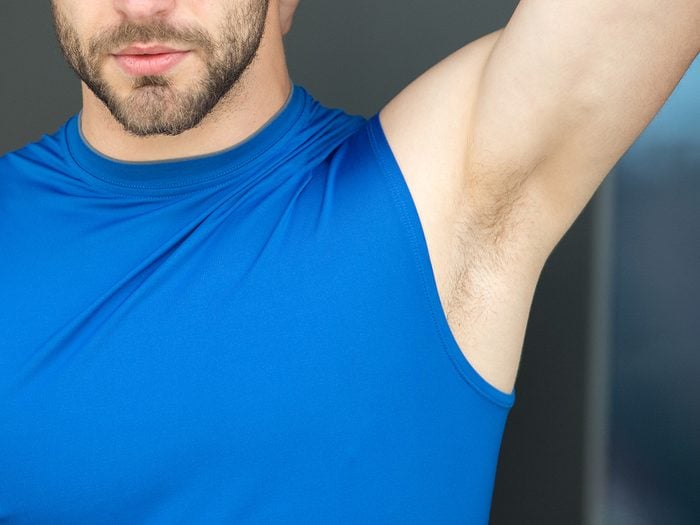
Lack of sweat
It’s hot and you should be sweating buckets; if not, it may be a sign of heat stroke. However, this is more likely in non-exertional heat stroke and doesn’t often occur from exercise. “This is one sign that everyone knows but doesn’t actually happen as much as we think,” says Dr. Winger. If you’re out there running and notice that there’s a layer of dry salt on your body, that’s actually an indication that your body is sweating as it should. The difference is when you’re not exercising but are enduring the heat and your skin stays dry.
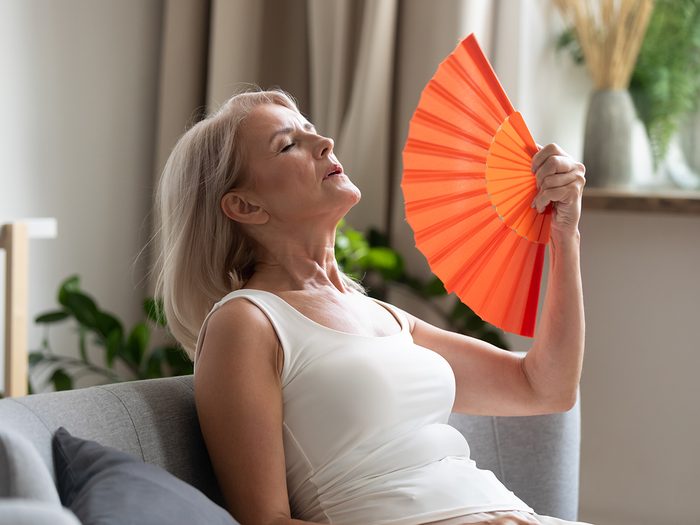
Red skin
Skin that’s red and hot is another indication that your body may be dangerously overheating. Now’s the time to take action to cool off before things progress. Along with watching out for loved ones, your furry friends can become dangerously overheated too: Watch for these heat stroke signs in dogs.
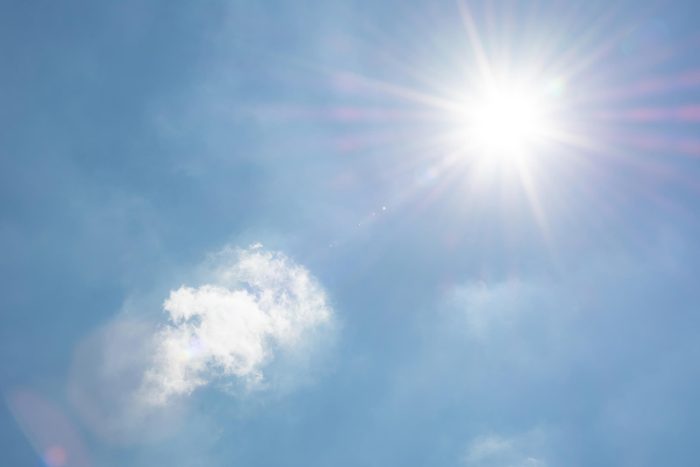
It’s an unseasonably hot day
You’d assume that the end of the summer would be the worst time of year for heat stroke, but when it comes to exercise-induced heat stroke, it’s actually the beginning of the summer season or early fall that can be trouble—should an uncommonly hot day occur. “When your body acclimatizes to hotter weather, you become a more efficient and voluminous sweater, which serves as a big defense against heat illness,” says Dr. Winger. If your body isn’t used to the heat, take frequent breaks, sip water or a sports drink to thirst, and seek out shady routes.
Find out why you should switch to mineral sunscreen this summer.

Passing out
Infants, the elderly, and people with chronic diseases are especially vulnerable to heat stroke, according to the CDC. The Mayo Clinic points out that fainting may be the first sign of heat stroke in these individuals. During a heat wave, keep a watch on people who fall into these groups; call 911 if they should pass out and consider CPR if necessary.
Brush up on the seven essential CPR steps.

Heat exhaustion
If you have heat exhaustion, you may be sweating profusely or have a rapid pulse, according to Mayo Clinic. This condition, also caused by the body overheating, can progress to heat stroke if not properly treated. They recommend resting right away and cooling your body down by moving to shade or air conditioning and drinking fluids.
Here are more surprising health benefits of staying hydrated.

What to do if you think you have heat stroke
Doctors can’t stress this enough: Call 911. If you are with a victim while waiting for help to arrive, you can fan and sprinkle them with water to help their body cool down. At the hospital, treatment involves cool water immersion or ice packs placed on the groin, neck, and armpits.
Next, check out 20 strange symptoms you should never ignore.